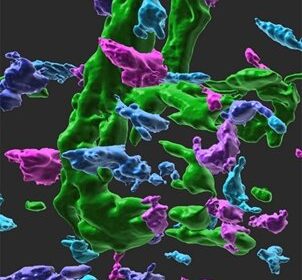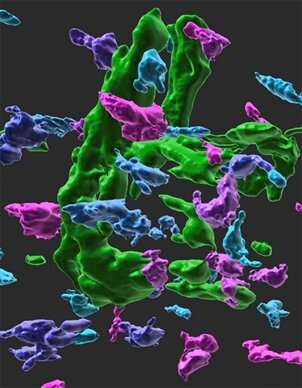Blood marker which predicts the risk of osteoporotic hip fractures in older men

NUS scientists have discovered that blood levels of the chemokine protein CXCL9 reliably predict the risk of osteoporotic hip fractures in Chinese men.
Healthy bone requires a balanced activity of various bone cells, most importantly bone-forming osteoblasts and bone resorbing osteoclasts. This balance is achieved by continual communication between both cell types. Any communication failure results in bone diseases, such as osteoporosis, where uncontrolled osteoclast activity results in excessive bone resorption and bone fractures. Bone Mineral Density (BMD) is currently used to diagnose osteoporosis in clinical practice but a reliable marker to predict the risk of osteoporotic bone fractures is lacking. In a recent study published in the Journal of Bone and Mineral Research (JBMR), a team of researchers from the National University of Singapore (NUS) reported that the chemokine protein CXCL9 can be used as a blood marker to predict osteoporotic hip fractures in Chinese men.
Earlier work by a research team led by Associate Professor Christoph WINKLER from the Department of Biological Sciences, NUS had identified CXCL9 as factor that is produced by osteoblasts and controls formation and activation of osteoclasts. Blocking CXCL9 or its receptor CXCR3 prevented osteoporosis in experimental models but no study has validated a possible association between CXCL9 and osteoporosis or fracture risk in humans. The team followed up by collaborating with Professor KOH Woon Puay and her team at the School of Medicine, NUS to conduct a matched case–control study.
This study included 55 men and 119 women who had experienced a hip fracture with an average of 6.3 years after their blood was collected. The participants were matched individually to controls who did not develop hip fractures. Investigators observed higher blood levels of CXCL9 in the pre-fracture blood samples of men with subsequent hip fractures compared with their non-fracture controls. No such difference was seen for the women participants.
Prof Koh said, “The unexpected difference in the results between men and women in our study may be explained by how changes in sex hormone levels during aging could influence the level and effects of CXCL9 differently in older men and women.”
Source: Read Full Article
